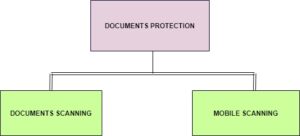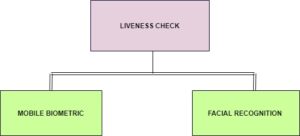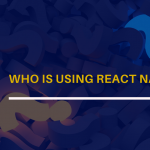Digitally Protected Documents
1. Document Scanning
Converting paper documents into digital images has always been preferred over sharing physical copies of the required documents. It makes the whole process not only efficient, effective, and cost-effective but also environmentally friendly.
Cost Saving:
Storing and managing paper documents is expensive, especially if you rely on file cabinets for document storage and retrieval. A standard four-drawer file cabinet requires approximately eight cubic feet of floor space, which can represent a significant portion of your office lease costs. In addition to that, you need to factor in the cost of your time to find and retrieve your documents. Document scanning allows you to store and retrieve your documents online. This reduces your storage costs and provides greater work efficiency.
Information sharing:
Paper-based systems are inherently inefficient. Several people print and photocopy the documents to view them at the same time. Document scanning enables your information to be shared digitally for enhanced employee collaboration and improved customer response times.
Environmental stewardship:
Document scanning benefits both your business and the environment. By converting your hard copy records to digital images, you use less paper and toxic printer ink and reduce mailing processes that increase your carbon footprint.
Mobile Document Scanning:
several mobile applications allow users to scan documents on the go. This means that a user can scan documents whether at work, at home, or on the go by streamlining the scanning process, allowing users to scan directly from their scanner or multi-function printer (MFP) to an Android device.
Mobile scan apps create a seamless transition between mobile devices and desktops, and between hard copies and digital documents. Instead of waiting until she is near a desktop computer or printer to convert a document from print to digital, a user can scan it immediately and send it from a phone.
Moreover, mobile scanning offers several benefits, such as the ability to save files on a mobile device, in the cloud, or straight to a mobile app. The latest scan apps keep users right within the same workflow by connecting to commonly used tools; users can send their scanned files directly to email, file browsers, document viewers, or cloud services like Dropbox, Evernote, Google Drive, and more. New apps also offer a wide range of universal settings options like resolution, color, file format, and custom scan areas.
It connects remote employees with the home office and each other. The mobile scan can help employees who are working far from each other feel like they’re just a cubicle away from coworkers. Many employees work from home for at least part of the workweek, and some work remotely daily, or while on the road. As long as there are scan hardware and Wi-Fi where the employee is — even if it’s in a co-working space or hotel business center — another colleague can send the employee a document, and the employee can print and mark it up before scanning it and sending it back to their colleague.
There are many solutions available that provide the above-mentioned facilities and much more. For example, the following solution enables users to scan documents, extract text from documents, and scan any other type of certificate, or card.

2. Liveness Check
Various mobile biometrics offers banks and other businesses a way to verify the identities of their new and existing customers. Mobile onboarding allows a prospective banking customer to open an account without visiting a branch. Biometrics makes this identity-proofing process more robust and secure. New customers can then use their biometrics in place of passwords for more secure and convenient mobile authentication.
Facial recognition is a particularly useful biometric modality for mobile onboarding and authentication:
● Nearly all mobile devices have built-in cameras that support them.
● The user experience of capturing a “selfie” is exceptionally intuitive and convenient.
● Face recognition is 99.7% accurate and getting more so by the year, according to NIST.
While facial recognition is an ideal biometric modality for mobile applications, it is also particularly vulnerable to “presentation attacks.” A presentation attack is an attempt by a fraudster to intentionally defeat biometric security measures by presenting non-live biometric data.
To do so, a fraudster might use a printed or digital photograph, video, or mask to either impersonate a targeted victim or assert a false identity. Such an attack is also called a “spoof.”
Facial recognition algorithms can be spoofed with relatively little effort due to the wide availability of facial images throughout the internet.
For this reason, it’s essential to apply robust liveness detection when using facial recognition for unattended mobile applications. There are at least two approaches to mitigating the risk of facial presentation attacks:
● Liveness detection algorithms: Analyze facial images to determine whether they are of a live human being or a reproduction.
● Multimodal biometrics: Add a second biometric modality, such as voice.
Without such spoof attack prevention measures, facial recognition-based biometric security is not sufficiently secure.

Liveness detection techniques:
Active liveness detection This entails a challenge and response; a user may be prompt to blink, smile, or move their device during a facial recognition capture. Users are fully aware of the liveness detection measures being applied.
Passive liveness detection This happens in the background and relies on algorithms that can identify and assess those artifacts in an image that indicate its content, including masks, cutouts, skin, texture, borders, and other indicators of a false representation of a user’s face. The process is opaque to the user, making it more difficult for a fraudster to learn how to circumvent it.
Hybrid A hybrid method does not require user interaction but is observable by a fraudster, making it potentially more vulnerable to circumvention than a purely passive approach.
Ideally, liveness detection techniques implements without degrading the user experience. Passive and hybrid liveness detection approaches have an advantage over active methods of requiring little or no user interaction and therefore present a more frictionless user experience. The opaqueness of truly passive approaches are beneficial in that no clues are given that instruct how to defeat the liveness detection measure.
Commerce is possible only when a person can instill confidence in their claimed identity in their counterpart. Humans have done this for thousands of years through visual recognition of our faces. Computers with extreme speed and accuracy perform the Biometric facial recognition algorithms.
The technology uses to establish trusted relationships between businesses and their customers across a digital channel.
But today, fraudsters exploits the technological advances. Modern cameras, displays, 2D and 3D printers, and even computer animation can be used to convincingly simulate a live human face. Liveness is foundational to biometrics; they are secure only when they can confidently demonstrate uniqueness in the present tense.
Thanks in large part to machine learning, facial recognition algorithms have become extremely accurate. Liveness detection algorithms are following a similar trajectory. But as with matching algorithms, liveness detection must work reliably for everyone, regardless of their physical appearance, the device they use, or the lighting environment in which they use it. Solutions that pair biometric matching performance with robust liveness detection will deliver on the promise of biometrics to make mobile commerce more convenient and secure.
https://www.idrnd.ai/passive-facial-liveness/







